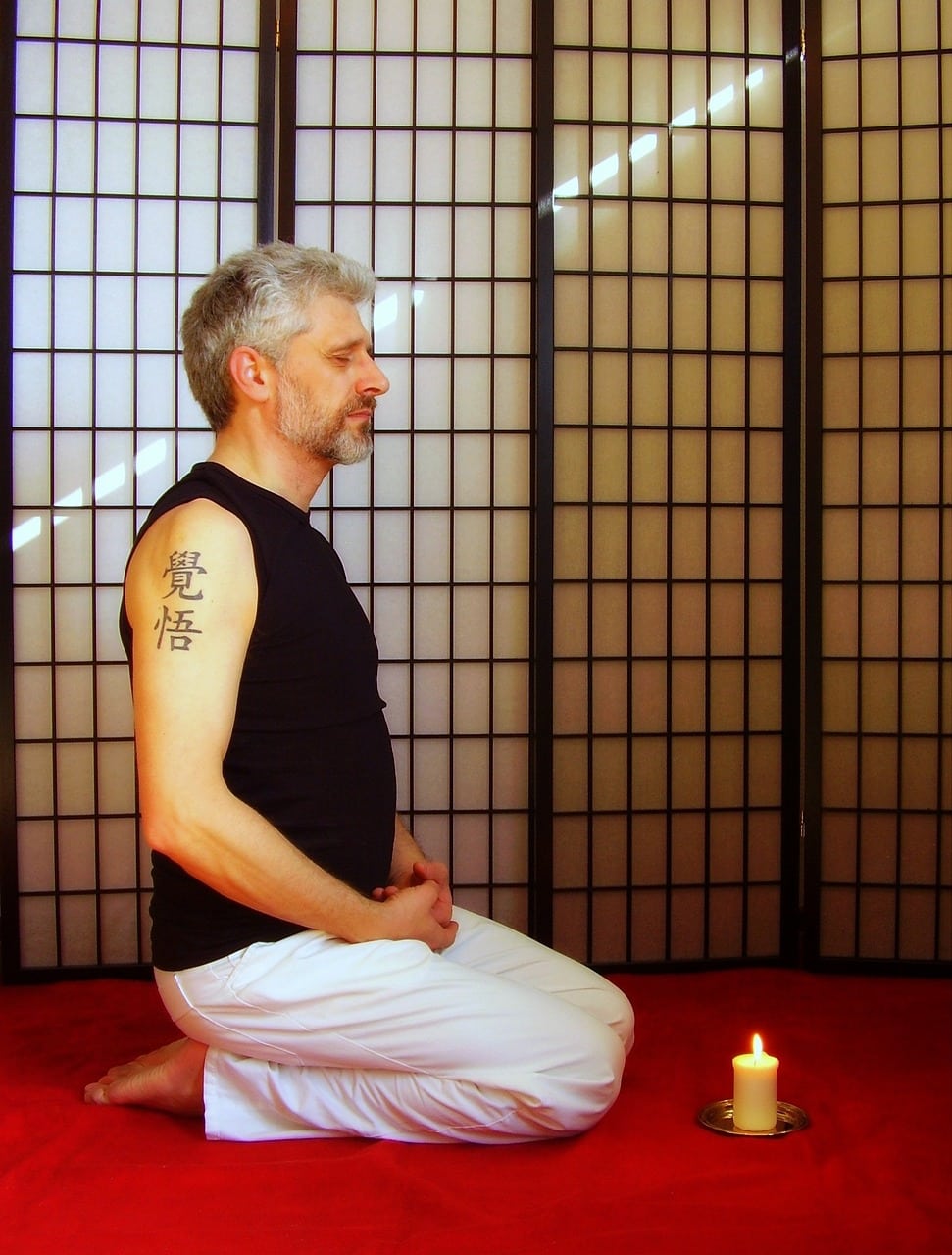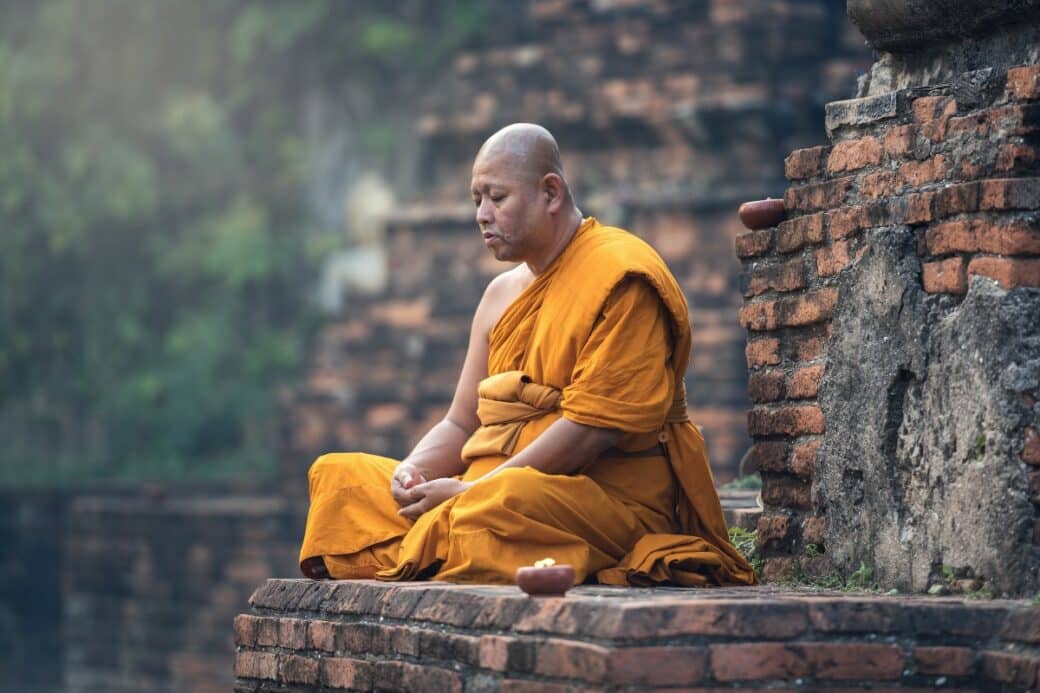Are you curious about the practice of Zazen meditation and the art of Zen? Zazen meditation is a form of seated meditation that is deeply rooted in the Zen tradition. It is a practice that allows individuals to quiet the mind, find inner peace, and gain a deeper understanding of themselves and the world around them. In this article, we will explore the essence of Zazen meditation, its techniques, and the benefits it offers. So, get ready to embark on a journey of self-discovery and tranquility as we delve into the world of Zazen meditation.
Understanding Zazen Meditation

If you’ve ever been curious about meditation or are looking to deepen your meditation practice, you may have come across the term “Zazen.” Zazen is a form of meditation that originates from Zen Buddhism, a school of Buddhism that emphasizes direct experience and insight. In this article, we will explore the origins and meaning of Zazen, its significance in Zen Buddhism, and delve into the principles, physical aspects, mental aspects, and spiritual aspects of Zazen. We will also discuss the benefits of Zazen meditation, how to practice it at home, its practice in Buddhist centers and monasteries, and resources for guidance and teachings. Lastly, we will compare Zazen meditation with other popular forms of meditation.
The Origins of Zazen
Zazen has its roots in Chinese Chán Buddhism, which traveled to Japan and became known as Zen Buddhism. The practice of Zazen was developed by the Chinese monk Bodhidharma, who is credited with bringing Buddhism from India to China. Bodhidharma’s teachings emphasized the direct transmission of enlightenment outside of scriptures and intellectual study. Over time, Zazen became a central practice in Zen Buddhism and has been passed down through generations of Zen teachers.

The Meaning of ‘Zazen’
The word “Zazen” is comprised of two Japanese characters: “za,” which means “sitting,” and “zen,” which means “meditation” or “absorption.” When combined, Zazen can be translated as “sitting meditation” or “seated absorption.” However, the meaning goes beyond just sitting still. Zazen is a practice of fully immersing yourself in the present moment, free from judgment, anticipation, and attachment. It is a state of simply being and embracing the reality of each moment as it arises.
The Significance in Zen Buddhism
Zazen is considered the primary practice of Zen Buddhism. It is seen as a tool for cultivating awareness, wisdom, and liberation from suffering. Zen practitioners view Zazen as a direct and experiential path to realizing one’s true nature, often referred to as “Buddha nature.” Through regular Zazen practice, Zen Buddhists aim to develop clarity of mind, deepen their understanding of the nature of reality, and awaken to the interconnectedness of all things. Zazen also plays a crucial role in developing the qualities of mindfulness, compassion, and equanimity.
The Principles of Zazen Meditation
The Concept of Mindfulness
Mindfulness is an essential aspect of Zazen meditation. It involves being fully present and aware of each passing moment, without judgment or attachment. In Zazen, mindfulness is cultivated by observing the breath, bodily sensations, and mental activity without getting caught up in them. By practicing mindfulness during Zazen, you can develop a greater understanding of the workings of your mind, emotions, and perceptions, ultimately leading to increased self-awareness and clarity.
The Importance of Posture and Breathing
Posture and breathing play a vital role in Zazen meditation. Maintaining a stable and upright posture is essential for physical stability and mental alertness. The traditional posture for Zazen is the cross-legged position, typically known as the full-lotus, half-lotus, or Burmese position. The back is kept straight, the chin slightly tucked, and hands are placed in a specific mudra, or hand gesture.
Conscious breathing is another key element of Zazen. By focusing on the breath, you can anchor your attention to the present moment and cultivate a calm and steady state of mind. Breathing in and out naturally, without controlling or manipulating the breath, allows you to observe the fluctuations of your thoughts and emotions with equanimity.
The Goal of Enlightenment
One of the primary goals of Zazen meditation is to realize enlightenment, also known as awakening or liberation. Enlightenment is the direct experience of one’s true nature and the interconnectedness of all things. It involves transcending the limitations of the ego-self and recognizing the inherent emptiness and impermanence of phenomena. While enlightenment is considered the ultimate goal, it is important to approach Zazen with the understanding that the practice itself is the path and the destination.
The Physical Aspects of Zazen
The Correct Posture for Zazen
A proper posture is crucial for the practice of Zazen. The cross-legged position, such as the full-lotus, half-lotus, or Burmese position, allows for stability and an upright spine. The back should be straight but not rigid, with the natural curves of the spine maintained. The chin is slightly tucked, aligning the head with the spine. The hands rest on the lap, forming a mudra specific to the Zen tradition you are practicing.
Maintaining a correct posture in Zazen enhances a sense of physical stability and alertness, helping to cultivate mental clarity and concentration. It also supports the natural flow of breath and energy throughout the body.
The Role of the Eyes in Zazen
In Zazen, the eyes are typically kept open with a soft gaze directed slightly downward. This open-eyed meditation allows you to be fully present and engaged with your surroundings while maintaining internal focus. By softening the gaze and not fixating on any particular object, you can avoid getting lost in thoughts and maintain a balance of awareness between the internal and external.
Keeping the eyes open during Zazen also helps to prevent drowsiness and promote a state of wakeful stillness. However, some practitioners with specific meditation traditions or preferences may choose to close their eyes partially or entirely during their practice.
Breathing Techniques in Zazen
Zazen emphasizes natural and relaxed breathing. There are no specific breathing techniques or patterns to follow in Zazen meditation. Instead, the focus is on observing the breath as it naturally flows in and out of the body. The breath serves as an anchor for attentiveness and mindfulness. By gently observing the breath without manipulation or control, you can cultivate a deep sense of presence and develop an intimate connection with the rhythm of your own breathing.
As you progress in your Zazen practice, mindfulness of the breath can extend beyond the formal meditation session and become an integral part of your everyday life, helping to ground you in the present moment and foster a greater sense of calm and clarity.
The Mental Aspects of Zazen
Thoughts and Emotions in Zazen
In Zazen, thoughts and emotions naturally arise and pass through the mind. However, the practice invites an attitude of non-attachment and non-judgment towards them. Rather than getting caught up in the content of your thoughts or trying to suppress them, Zazen encourages you to observe them without engagement or aversion. By cultivating this non-reactive awareness, you develop a sense of stability and equanimity in the face of the ever-changing mental landscape.
Emotions, too, are acknowledged and allowed to arise and dissipate freely during Zazen. Whether positive or negative, the aim is to observe them without identification or judgment. This practice supports the development of emotional resilience and a deeper understanding of the transient nature of emotions.
The States of Consciousness in Zazen
Zazen can give rise to various states of consciousness. As you settle into the practice, you may experience a range of states, from a busy and scattered mind to moments of deep stillness and clarity. The mind may oscillate between thoughts, daydreams, and states of focused concentration. It is essential to approach all states of consciousness with non-judgment and curiosity, realizing that they are all part of the unfolding of your meditation practice.
In Zen, Zazen is often described as a state of “just sitting,” free from expectation or seeking. In this state, the mind rests in an open and spacious awareness, allowing whatever arises to pass freely without grasping or aversion. By cultivating this state of non-striving and non-attachment, you can develop greater insight and clarity.
Overcoming Distractions and Maintaining Concentration
Distractions are an inherent part of the Zazen practice. The mind has a tendency to wander and get caught up in thoughts, memories, or bodily sensations. Yet, the practice of Zazen involves gently and repeatedly bringing the attention back to the present moment. When you notice yourself being carried away by thoughts, you can kindly acknowledge them and then redirect your attention to the breath, the body, or the sensations of sitting.
Over time, with consistent practice, distractions become less potent, and the ability to maintain concentration improves. As the mind settles, you may find greater ease in maintaining focused attention and a deeper sense of inner stillness.
The Spiritual Aspects of Zazen
Dropping Off Body and Mind
In Zazen, there is an invitation to let go of attachment to the physical body and the discursive mind. This is often referred to as “dropping off body and mind.” By releasing identification with the body and relinquishing the constant chatter of the mind, you can tap into a deeper sense of presence and groundedness.
“Dropping off body and mind” doesn’t imply dissociation or denial of the physical and mental aspects of your being. Rather, it is an opportunity to recognize the impermanent and transient nature of these aspects and transcend their limitations. Through this realization, you may directly experience a profound sense of interconnectedness and the underlying ground of being.
Realizing Buddha Nature
Zazen is a practice that aims to awaken practitioners to their inherent Buddha nature. Buddha nature refers to the innate potential for enlightenment present in all beings. It is the recognition that each person has the capacity to realize their true nature, free from delusions and suffering. Through Zazen, you can dissolve the barriers that obscure your Buddha nature, allowing it to shine forth.
The realization of Buddha nature is not a concept or intellectual understanding but a direct experience. It is a shift in perception that transcends duality and leads to a profound sense of interconnectedness and compassion for all beings. Cultivating this awareness through Zazen can bring about a transformation in how you relate to yourself, others, and the world around you.
Living in the Present Moment
Zazen meditation encourages you to fully embrace the present moment. By letting go of attachments to the past and worries about the future, you can cultivate a deep appreciation for the ever-changing flow of life. Zazen reminds you that the only moment that truly exists is the present one. It invites you to meet each moment with a sense of openness and curiosity, as if experiencing it for the very first time.
Living in the present moment through Zazen can bring about a greater sense of peace, contentment, and gratitude. It helps you become more fully immersed in your daily activities and relationships, fostering a deeper connection to the richness of life.
Benefits of Zazen Meditation
Psychological Benefits
Zazen meditation offers a range of psychological benefits. Regular practice can lead to reduced stress, anxiety, and depression, as it helps regulate the nervous system and promotes a state of calm and relaxation. Zazen cultivates self-awareness and supports emotional resilience, enabling you to navigate difficult emotions with more ease. The practice also improves focus, concentration, and cognitive function, enhancing mental clarity and creativity.
Physical Benefits
The physical benefits of Zazen meditation are closely linked to its emphasis on posture and breathing. Maintaining a correct posture in Zazen strengthens the core muscles, improves spinal alignment, and increases overall flexibility and stability. The practice of deep and relaxed breathing during Zazen promotes respiratory health, supports the immune system, and enhances oxygen flow throughout the body.
Spiritual Benefits
Zazen meditation is deeply rooted in spiritual exploration and growth. By regularly engaging in the practice, you may experience a heightened sense of spirituality, transcending the confines of the ego and developing a deeper connection to the transcendent and the sacred. Zazen cultivates qualities such as compassion, equanimity, and interconnectedness, fostering a sense of unity and harmony within oneself, with others, and with the world.
Practicing Zazen Meditation at Home
Creating a Conducive Environment
Practicing Zazen at home requires creating a conducive environment that supports your meditation practice. Find a quiet space where you won’t be easily disturbed. Set up a dedicated meditation area that is clean, comfortable, and free from clutter. You may choose to adorn the space with items that hold spiritual significance to you, such as candles, incense, or sacred images. It can be helpful to establish a consistent routine and designate a specific time for your daily Zazen practice.
Timing and Consistency
Consistency is key when practicing Zazen at home. Aim to establish a regular schedule that works best for you, whether it’s in the morning, evening, or any other time that allows for focus and minimal distractions. Start with shorter sessions of 10-15 minutes and gradually increase the duration as you become more comfortable. Setting a timer can help you stay committed to the practice and ensure that you don’t cut short or extend your meditation session.
Dealing with Difficulties
As with any meditation practice, difficulties may arise during Zazen. It is not uncommon to encounter physical discomfort, restlessness, or resistance to the practice. Rather than avoiding or pushing through these challenges, Zazen encourages a compassionate and gentle approach. If experiencing discomfort, you can make adjustments to your posture or use supportive cushions or benches. If restlessness or resistance arises, see if you can meet it with curiosity and acceptance, allowing it to pass naturally.
It can be beneficial to seek guidance from experienced practitioners or Zen teachers to help navigate any challenges that arise in your Zazen practice. They can offer insights, suggestions, and support to deepen your understanding and address specific difficulties.
Zazen Meditation in Buddhist Centers and Monasteries
The Daily Routine of Zazen in a Zen Monastery
In Buddhist centers and monasteries, Zazen meditation is often a fundamental part of the daily routine. The monastic schedule typically involves multiple periods of Zazen interspersed with walking meditation (kinhin) and other activities such as meals, work, and study. The schedule may begin early in the morning and extend into the evening, allowing for sustained periods of focused meditation.
The structured environment of a Zen monastery provides a supportive and immersive setting for deepening one’s Zazen practice. It offers opportunities for guidance from experienced teachers and the collective energy of fellow practitioners, creating a conducive atmosphere for growth and transformation.
Zazen Retreats and Seshin
Zazen retreats, also known as seshin, are intensive periods of meditation practice that can last from a few days to several weeks. Retreats often take place in Buddhist centers or monasteries and provide an opportunity for practitioners to immerse themselves fully in Zazen and the surrounding spiritual environment. During a retreat, participants dedicate more time to silent meditation, engage in chanting, receive teachings, and have the chance to meet with teachers for private interviews.
Retreats offer a unique experience of deepening one’s practice, overcoming challenges, and cultivating a greater sense of inner stillness and insight. They provide a supportive container for individuals to connect with the essence of Zazen and strengthen their commitment to the path of awakening.
Zen Monastic Rituals and Ceremonies
In addition to daily Zazen practice, Zen monasteries often incorporate rituals and ceremonies into their schedule. These rituals serve to deepen the experience of presence, offer reverence to the Buddha and Zen ancestors, and enhance the sense of community among practitioners. Chanting of sutras, prostrations, tea ceremonies, and incense offerings are among the various activities that may comprise monastic rituals and ceremonies.
Engaging in these rituals can deepen one’s connection to the rich history and lineage of Zen Buddhism, fostering a sense of humility, gratitude, and interconnectedness with the wider Zen community.
Guidance and Teachings on Zazen Meditation
Learning from a Zen Teacher
Learning and deepening your Zazen practice can greatly benefit from the guidance of an experienced Zen teacher. A Zen teacher can offer personalized instruction, answer questions, and provide insights to help navigate the nuances of Zazen and address specific challenges that may arise. They can also assist in clarifying the teachings and help cultivate a deeper understanding of Zen Buddhism.
To find a Zen teacher, you can explore local Zen centers, monasteries, or sanghas (communities). Many Zen teachers also offer online teachings and private sessions, making their guidance accessible to individuals regardless of their location.
Books and Online Resources on Zazen
There are numerous books and online resources available to deepen your understanding and practice of Zazen. These resources offer a wealth of teachings, insights, and practical guidance from experienced Zen teachers and practitioners. Some recommended books on Zazen include “The Three Pillars of Zen” by Roshi Philip Kapleau, “Zen Mind, Beginner’s Mind” by Shunryu Suzuki, and “The Miracle of Mindfulness” by Thich Nhat Hanh.
Online platforms, such as websites, podcasts, and meditation apps, provide access to guided Zazen instructions, talks, and discussions on various aspects of Zen practice. These resources can be valuable companions in your Zazen journey, supporting your growth and inspiration.
Understanding Zen Teachings and Koans
Zen teachings and koans are an integral part of practicing Zazen meditation. Zen masters often employ paradoxical statements, questions, or stories as teaching tools to provoke insight and challenge conventional conceptual thinking. Koans are designed to bypass linear or logical thinking and induce a direct and non-conceptual experience of reality.
To deepen your understanding of Zen teachings and koans, studying commentaries by Zen masters or engaging in koan introspection with a teacher can be immensely beneficial. Exploring koans individually or as part of a group can provide a direct and experiential way to penetrate the depths of consciousness and awaken to the true nature of reality.
Comparing Zazen Meditation with Other Forms of Meditation
Zazen vs Vipassana
Zazen and Vipassana are both forms of meditation that have their roots in Buddhism but differ in their approaches and emphases. Zazen, coming from Zen Buddhism, emphasizes silent sitting meditation, often with eyes open, and an inclusive awareness of all mental and physical phenomena. It aims to cultivate a state of non-duality and direct experience of reality.
Vipassana, on the other hand, is a practice that comes from Theravada Buddhism and focuses on developing insight into the nature of reality through the systematic observation of bodily sensations, thoughts, and emotions. Vipassana meditation often starts with the practice of mindfulness of breath and progresses to a panoramic awareness of all phenomena arising and passing away in the present moment.
Both Zazen and Vipassana offer valuable paths for self-discovery and awakening. The choice between them often depends on personal inclination, tradition, and the guidance of experienced teachers.
Zazen vs Transcendental Meditation
Zazen and Transcendental Meditation (TM) are different approaches to meditation. Zazen, rooted in Zen Buddhism, places emphasis on sitting in stillness and being fully present with whatever arises in the mind and body. It does not prescribe a specific mantra or technique but focuses on cultivating awareness and deepening insight into the nature of reality.
Transcendental Meditation, popularized by Maharishi Mahesh Yogi, involves the use of a personalized mantra that is repeated silently. The mantra serves as a vehicle for transcending ordinary thinking and accessing deeper levels of consciousness. The practice aims to reduce mental and physical stress, promote relaxation, and enhance self-awareness.
Both Zazen and Transcendental Meditation offer unique benefits and can be effective in their own right. It is up to the individuals to explore and determine which approach resonates most with their needs and aspirations.
Zazen vs Mindfulness Meditation
Zazen and mindfulness meditation share common roots in Buddhist traditions while differing in certain aspects. Zazen, as practiced in Zen Buddhism, involves silent sitting meditation with eyes open, encompassing awareness of thoughts, emotions, bodily sensations, and the environment. It emphasizes non-dualistic experience and the cultivation of insight into the true nature of reality.
Mindfulness meditation, derived from various Buddhist traditions, particularly Theravada Buddhism, involves bringing non-judgmental attention to the present moment, often with a specific anchor such as the breath or bodily sensations. Mindfulness meditation develops awareness, concentration, and acceptance of all experiences, fostering a sense of balance and equanimity.
While Zazen and mindfulness meditation overlap in their objectives of cultivating awareness and insight, each has its unique approaches and techniques. Exploring both practices can deepen your understanding of meditation and provide a broader range of tools for self-discovery and transformation.
In conclusion, Zazen meditation is a profound and transformative practice that offers a path to self-discovery, wisdom, and liberation from suffering. Through understanding the principles, physical aspects, mental aspects, and spiritual aspects of Zazen, you can embark on a journey of deepening self-awareness, compassion, and clarity of mind. Whether practiced at home, in Buddhist centers, or monasteries, Zazen offers a doorway to self-transcendence and a direct experience of your true nature. So, find a comfortable seat, take a deep breath, and let yourself fully immerse in the present moment through the profound art of Zazen meditation.




